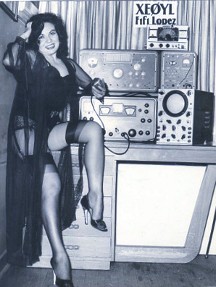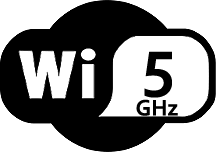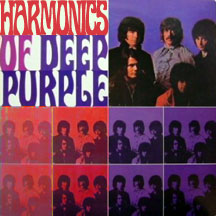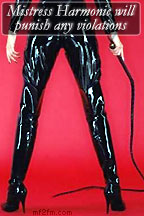About 18 months ago, the Wireless Waffle team wrote a paper on the topic of what radio amateurs in the UK might have to pay if spectrum pricing was applied to the spectrum they use. The paper was offered to the RSGB and to Practical Wireless as material that could be used for an article in their prestigious magazines.
 The RSGB indicated that it was not the sort of article they normally published as it didn't have antennas in it or any pictures of people standing on a mountain or remote desert island. Practical Wireless never responded as they were too busy assessing the merits of the latest amateur radio gizmo to come from Latin America (see right) and the whole thing got shoved to the bottom of the 'to do' pile and forgotten about. At least I think that was what the RSGB and PW said, the old memory is a bit hazy on the subject.
The RSGB indicated that it was not the sort of article they normally published as it didn't have antennas in it or any pictures of people standing on a mountain or remote desert island. Practical Wireless never responded as they were too busy assessing the merits of the latest amateur radio gizmo to come from Latin America (see right) and the whole thing got shoved to the bottom of the 'to do' pile and forgotten about. At least I think that was what the RSGB and PW said, the old memory is a bit hazy on the subject.
Whilst the material contained in the paper is now around a year old, it still makes for interesting reading and it is almost certain that Wireless Waffle readers will find it worth the time to study. Rather than think what to do with it next, it has been uploaded to the web-site and is now available for anyone to download and read.
So, for your reading pleasure, we present 'The Duffer's Guide to Spectrum Pricing. Pour yourself a beer, turn on your VHF radio, and have a read. Then, if you are a radio ham, realise how lucky you are to be able to afford that beer you just poured yourself!
 The RSGB indicated that it was not the sort of article they normally published as it didn't have antennas in it or any pictures of people standing on a mountain or remote desert island. Practical Wireless never responded as they were too busy assessing the merits of the latest amateur radio gizmo to come from Latin America (see right) and the whole thing got shoved to the bottom of the 'to do' pile and forgotten about. At least I think that was what the RSGB and PW said, the old memory is a bit hazy on the subject.
The RSGB indicated that it was not the sort of article they normally published as it didn't have antennas in it or any pictures of people standing on a mountain or remote desert island. Practical Wireless never responded as they were too busy assessing the merits of the latest amateur radio gizmo to come from Latin America (see right) and the whole thing got shoved to the bottom of the 'to do' pile and forgotten about. At least I think that was what the RSGB and PW said, the old memory is a bit hazy on the subject.Whilst the material contained in the paper is now around a year old, it still makes for interesting reading and it is almost certain that Wireless Waffle readers will find it worth the time to study. Rather than think what to do with it next, it has been uploaded to the web-site and is now available for anyone to download and read.
So, for your reading pleasure, we present 'The Duffer's Guide to Spectrum Pricing. Pour yourself a beer, turn on your VHF radio, and have a read. Then, if you are a radio ham, realise how lucky you are to be able to afford that beer you just poured yourself!
1 comment
( 1629 views )
| permalink
| 



 ( 3 / 45430 )
( 3 / 45430 )




 ( 3 / 45430 )
( 3 / 45430 )
 Although the standard for WiFi at 5 GHz has been around for a long time, most manufacturers have focused upon producing equipment for the 2.4 GHz band. The reason for this is a simple one - it's cheaper! The higher you go in frequency, the more difficult, and therefore expensive, it becomes to transmit and receive radio signals. As a result, home routers, laptops, smart phones and other devices have almost exclusively been equipped to use the 2.4 GHz band for their WiFi connection.
Although the standard for WiFi at 5 GHz has been around for a long time, most manufacturers have focused upon producing equipment for the 2.4 GHz band. The reason for this is a simple one - it's cheaper! The higher you go in frequency, the more difficult, and therefore expensive, it becomes to transmit and receive radio signals. As a result, home routers, laptops, smart phones and other devices have almost exclusively been equipped to use the 2.4 GHz band for their WiFi connection.Previous Wireless Waffle articles have discussed how to select the best WiFi channels in the 2.4 GHz band, and other techniques, to maximise coverage and signal quality, however we have not looked at the 5 GHz band. Recently, there seem to be a slew of articles which are claiming that using 5 GHz will produce better range and more reliable connections compared to 2.4 GHz. The logic of these articles seems to go '5 is a bigger number than 2.4 - in fact it is more than double - so it must be at least twice as good'. This, sad to say, is not the case. Here are the real facts:
- Signals at 5 GHz only travel HALF as far as those on 2.4 GHz as higher frequencies have poorer coverage than lower ones.
- Signals at 5 GHz will struggle almost TWICE AS HARD to get through walls than signals at 2.4 GHz due to their poorer propagation characteristics.
- 5 GHz WiFi equipment is subject to exactly the same POWER RESTRICTIONS as that for 2.4 GHz, so there is no inherent advantage in terms of the technology itself.
- The use of some of the 5 GHz channels is subject to the requirement to STOP TRANSMITTING if a nearby radar is detected. No such restriction applies at 2.4 GHz.
- 5 GHz equipment will be (slightly) more POWER HUNGRY than its 2.4 GHz counterparts, increasing battery drain especially in mobile devices.
- 5 GHz receivers are likely to be LESS SENSITIVE than 2.4 GHz receivers because of the increased difficulty of making low noise devices at higher frequencies.
- The 5 GHz band consists of up to 25 (territory dependent) independent channels which can be used without interfering with each other meaning there is much GREATER CAPACITY for more networks, whereas the 2.4 GHz band has 13 channels of which only 3 can be used independently.
- The 2.4 GHz band is also used for Bluetooth, microwave ovens, wireless cameras and many other applications meaning it can be subject to a lot of background interference. The 5 GHz band is MUCH CLEANER, though the band is not exclusive to WiFi systems.
- There are still fewer 5 GHz devices around than 2.4 GHz once and hence it is likely to be LESS SUSCEPTIBLE TO SNOOPING.
For a home network, in a small house or apartment, using 5 GHz may offer some advantages given the lower interference it will suffer from other devices, but in large family homes a 5 GHz WiFi router is unlikely to be able to outperform the coverage and range that a 2.4 GHz router achieves.
 Where the 5 GHz band may come into its own is when the not-quite-yet-finalised IEEE 802.11ac standard is adopted. This works in the 5 GHz bands and uses the greater capacity of the band to deliver connection speeds of up to 1 Gbps. For streaming media around, this has clear advantages. As a wireless distribution for a home internet connection, however, there is unlikely to be any improvement noticeable using 802.11ac than with the existing 802.11n standard which can already offer connections of over 100 Mbps - much faster than most home internet connections!
Where the 5 GHz band may come into its own is when the not-quite-yet-finalised IEEE 802.11ac standard is adopted. This works in the 5 GHz bands and uses the greater capacity of the band to deliver connection speeds of up to 1 Gbps. For streaming media around, this has clear advantages. As a wireless distribution for a home internet connection, however, there is unlikely to be any improvement noticeable using 802.11ac than with the existing 802.11n standard which can already offer connections of over 100 Mbps - much faster than most home internet connections!Monday 23 January, 2012, 04:09 - Spectrum Management
Posted by Administrator
Over the years, Wireless Waffle has tried to explain and demystify many of the more esoteric technical terms and concepts used in the wireless world such as OFDM, intermodulation and even interpreting ionograms. There is one very straightforward technical concept that is so often misused that it's time the record is set straight. That concept is harmonics.Posted by Administrator
Harmonics should be the easiest concept to understand. Passing any radio (or for that matter audio) signal through anything that is not perfectly linear (and the only things that are perfectly linear are pieces of wire) will produce differing degrees of harmonics. The non-linear device will produce other things as well (such as the aforementioned intermodulation) but harmonics are probably the number one resultant.
A harmonic is simply a copy of the original signal but with it's frequency multiplied by an integer. The second harmonic is therefore the original signal but with all it's frequencies doubled.
- The second harmonic of 1 MHz is at 2 MHz;
- the second harmonic of 10 MHz is at 20 MHz;
- the second harmonic of 150 MHz is 300 MHz;
 Musicians will recognise the second harmonic as being an octive. The third harmonic is simliary the original frequency, but tripled. The third harmonic of 1 MHz is 3 MHz, and so forth. The n-th harmonic is the original frequency multiplied by 'n' so the 273rd harmonic of 2 MHz is... 546 MHz. You can even play the game with light (just about) as the second harmonic of deep red (almost infra-red) is deep purple (ultra-violet) which probably explains why so many wannabe rock groups use devices such as 'harmonisers' and 'harmonic sweetners'. The only rule is that 'n' has to be an integer. There is no such thing as the 'second and a halfth' harmonic, and this seems to be where the confusion arises.
Musicians will recognise the second harmonic as being an octive. The third harmonic is simliary the original frequency, but tripled. The third harmonic of 1 MHz is 3 MHz, and so forth. The n-th harmonic is the original frequency multiplied by 'n' so the 273rd harmonic of 2 MHz is... 546 MHz. You can even play the game with light (just about) as the second harmonic of deep red (almost infra-red) is deep purple (ultra-violet) which probably explains why so many wannabe rock groups use devices such as 'harmonisers' and 'harmonic sweetners'. The only rule is that 'n' has to be an integer. There is no such thing as the 'second and a halfth' harmonic, and this seems to be where the confusion arises.As harmonics are so common, much effort is made to ensure that transmitters are filtered to remove them. A low pass filter is one which allows lower frequencies through but attenuates higher ones and is almost universally tacked onto the output of any transmitter. You would not want a high power TV transmitter on 534 MHz (UHF channel 29 in Europe) radiating strong signals at its second harmonic frequency of 1068 MHz, in the middle of the aeronautical safety band, any more than you would want an aeronautical system at 1068 MHz radiating at 2136 MHz and causing interference to 3G base stations!
 So often, you will see spurious emissions from a transmitter being called 'harmonics'. Unless those emissions are on direct multiples of the main transmitter frequency they are not harmonics, but will either be intermodulation or could be caused by the transmitter squegging. Either way, the term harmonics seems to have been awarded a new meaning to encompass all spurious emissions from a transmitter. As a Wireless Waffle reader, now that you know different, any violations of use will be punished strictly and severely.
So often, you will see spurious emissions from a transmitter being called 'harmonics'. Unless those emissions are on direct multiples of the main transmitter frequency they are not harmonics, but will either be intermodulation or could be caused by the transmitter squegging. Either way, the term harmonics seems to have been awarded a new meaning to encompass all spurious emissions from a transmitter. As a Wireless Waffle reader, now that you know different, any violations of use will be punished strictly and severely.For completeness, it is worth pointing out that there are (very rarely) such things as sub-harmonics. These occur on frequencies that are integer multiples of integer fractions of the original frequency. As an example, a problem was reported by the operator of a private mobile radio system on 72.45 MHz of breakthrough from a co-sited FM broadcast station on 96.6 MHz. 72.45 is precisely three-quarters of 96.6. This rare problem was caused by the synthesiser in the transmitter which had an oscillator on 96.6 MHz which was fed into a pre-scalar that divided the signal by 4, producing an output at 24.15 MHz. This signal was rich in harmonics and due to the shoddy design of the transmitter, the third harmonic of this signal was being fed into the transmit amplifiers and appearing at the antenna output - nasty! An additional filter on the output of the FM transmitter cured the problem. It's perhaps no surprise that the company that made the transmitter in question (who won't be identified) is no-longer manufacturing them!
 Apparently, mobile phone operators are beginning to run out of capacity on their networks due to all the data traffic that is being generated by smart-phones and people using broadband dongles in their laptops. Of course, whether or not this is true or not today or whether it is just an excuse for poor service quality, there will almost certainly come a time in the relatively near future when it the squeeze on spectrum becomes reality.
Apparently, mobile phone operators are beginning to run out of capacity on their networks due to all the data traffic that is being generated by smart-phones and people using broadband dongles in their laptops. Of course, whether or not this is true or not today or whether it is just an excuse for poor service quality, there will almost certainly come a time in the relatively near future when it the squeeze on spectrum becomes reality.A typical mobile operator in an average European country will currently have access to something like 100 MHz of radio spectrum - 50 MHz for the uplink from phones to base stations and another 50 MHz in the opposite direction - more commonly written 2 x 50 MHz. This will be in usually two (or more) of the commonly available mobile bands, such as:
- 900 MHz (actually 880 - 915 and 925 - 960 MHz)
- 1800 MHz (1710 - 1785 and 1805 - 1880 MHz)
- 2100 MHz (1920 - 1980 and 2110 - 2170 MHz)
- 800 MHz (791 - 821 and 832 - 862 MHz) - the 'digital dividend'
- 2600 MHz (2500 - 2570 and 2620 - 2690 MHz) - note that the gap between 2570 and 2620 MHz is also available
So what's the problem? Some observers (eg Cisco) claim that mobile data traffic is doubling roughly every year, so this 60% increase in capacity will amount to about 8 months of traffic growth, then the problem starts all over again. New technology will deal with some growth. Newer mobile technologies from HSPA+ to LTE and LTE-Advanced may offer a doubling in capacity over current 3G (UMTS) networks for each unit of spectrum. Another year dealt with, and only at the cost of changing over all of the network equipment and handsets!
On this front, it is perhaps no surprise that UK mobile operator O2 recently announced plans to offer free WiFi for all. Why is this no surprise? If the traffic from smartphones and laptops can be offloaded from the mobile network to WiFi hotspots, this will ease the burden on the mobile network. But this is a relatively short-term fix too. In the long term, the only way that mobile operators will be able to deal with the growth in data traffic is to get access to more spectrum. But where will this spectrum come from?
It has long been recognised that to offer a sensible (in terms of cost, coverage and capacity) mobile network, frequencies in the range 300 to 3000 MHz are best. Go any higher and things such as Doppler shift and cell handover become real problems. Go any lower and antennas become too large and unwieldy. The problem is that the remaining frequencies in this range are already being used. In general terms:
- 300 to 430 MHz is military territory
- 430 to 440 MHz is radio amateur land
- 440 to 470 MHz is full with PMR systems
- 470 to 790 MHz has UHF television broadcasters in it
- 790 to 862 MHz is already mobile
- 862 to 880 MHz houses all manner of low power devices
- 880 to 960 MHz is already mobile
- 960 to 1350 MHz is where aircraft radars and some radio amateurs live
- 1350 to 1710 MHz is for satellites (including GPS and weather satellites), DAB broadcasting and more tanks, planes and guns
- 1710 to 1980 MHz is already mobile
- 1980 to 2110 MHz is partly mobile and partly full of military folk
- 2110 to 2170 MHz is already mobile
- 2170 to 2400 MHz is mostly military
- 2400 to 2500 MHz is WiFi and bluetooth land
- 2500 to 2690 MHz is already mobile
- 2690 to 2700 MHz is where radio astronomers hang out (mostly in cardigans)
- 2700 to 3100 MHz is aircraft and maritime radars
Clearly, anyone who moves out for the benefit of mobile services will either have to stop doing what they do (unlikely) or go and do it somewhere else (costly). For any international service (eg boats and planes) this cannot be done unilaterally and getting international agreement is probably too slow. What's more, radars and things such as that need a lot of spectrum due to the way they work and furthermore, removing them might cause planes to fall out of the sky, which would seriously disrupt tourism in many parts of Europe that aren't very close to where you live (though it might have a potential commercial upside for undertakers).
Wireless Waffle is therefore going to stick it's neck out and make a proposal as to who should lose the battle for this important part of the spectrum and that is ... the broadcasters!
On a completely different, but not unrelated tack, the amount of energy consumed by a terrestrial broadcasting networks is, well, large. Not 'a whole power station' large, but still pretty big. The amount of energy consumed by a satellite is tiny. In fact, once it's up in the sky, it's zero (they are solar powered). A terrestrial broadcast network also delivers much less capacity than a satellite. So broadcasting by satellite consumes much less power (and therefore has a much lower carbon footprint) and offers much greater capacity (for services such as 'The Cartoon Network' in HD). Let's therefore turn off UHF broadcasting and give the spectrum to mobile networks - the broadcasters can go to cable and satellite and can continue to use the VHF band if they really want to.
What would a world without UHF broadcasting look like. In somewhere such as the Netherlands where 90% or more of homes are on cable, not a lot different. It would mean that people's holiday homes might need a satellite dish but these are so cheap and plentiful it should be no big deal. In the UK where most homes still have a terrestrial UHF receiver you might think this would be a bigger deal, but over 50% of homes have either satellite or cable already and again, having to buy a dish is no biggie, so other than the temporary inconvenience of swapping set top boxes and putting a dish up (or getting connected to cable) nothing much would change.
If they so desired, public service broadcasters could continue terrestrial television broadcasting using the VHF band - by switching off those ancient and largely unlistened-to DAB transmitters. DAB could be replaced by DRM and Bob's your uncle - no loss of anything important, just a bit of shuffling around.
If all this sounds far fetched, watch this space. Or, perhaps more accurately, watch outer space!


